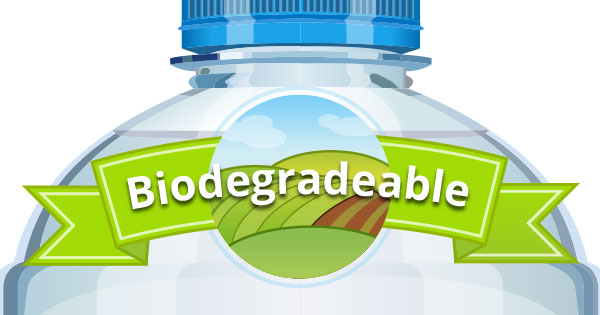Sometimes it can be pretty hard to fully understand a manufacturer’s claim that their product or packaging is eco-friendly. This is because ‘eco-friendliness’ is a complex subject. For example, the seemingly most eco-friendly packaging plastics of them all, bioplastics (plastics made from organic material), are not necessarily biodegradable: Some completely natural materials used in packaging, such as some types of celluloid, don’t biodegrade at all. Then, there are some bio- based packaging materials are combined with petroleum. Finally, some petroleum-based products are actually biodegradable! And don’t forget the word renewable, which only means that whatever a product is made with, it with can be renewed (regrown) like a forest; which doesn’t necessarily have anything to do with eco-friendliness. Think of the cornfields dedicated to making ethanol for cars.
Whatever it’s origin, if a material is biodegradable, at least we can be sure that whatever environmental burden has been created in making it, will stop as it goes back into the environment. Well, so long as it biodegrades properly.
Ok, what does that mean? According to the ASTM (American Society for Testing and Materials), an internationally recognized standards organization, something that is biodegradeable must:
- Disintegrate rapidly in the composting process (breaking down and leaving no large pieces)
- Biodegrade quickly under composting conditions
- Not reduce the value or utility of the finished compost, which will be able to support plant life
- Not contain high amounts of regulated metal
This according to the D6400 standard for compostability of products, and the D6868 standard for the compostability of packaging.
There are now several packaging materials that have obtained ASTM D6400 or D6868, using extremely interesting methods. A recent overview of packaging materials published by Packaging Digest called ‘Yesterday’s promising ‘green’ materials: Where are they now?’ inventoried some of these materials. Here are the ones that continue to show promise:
- PHA Polymer, which is made from a microbial fermentation process that uses plant derived sugar (it also has ASTM D7081certification for marine-based biodegradation)
- PLA or Polylactide, a polyester derived from lactic acid which can be produced from agricultural products containing starch or sugar
- Enhanced PLA, which is ASTM 6866 certified for 46% bio-based content with a material flexibility that allows it to be used in anything from packaging to 3D printing.
- Notice that all three of these plastics use a sugar fermentation process, which adds cost to the material. To avoid this hurdle, some manufacturers are looking at methods to use cheaper ingredients for fermentation, such as methane, which would also reduce energy use in the process and further reduce the product’s environmental burden.
The bottom line is that the more plastics continue to evolve, the more biodegradable they’ll become, and finally, it will become pretty simple to understand if they are eco-friendly or not.







